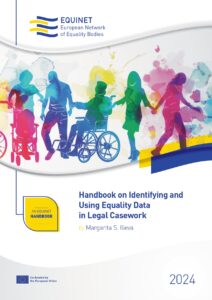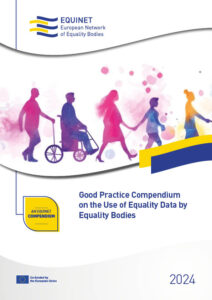Enhancing Legal Casework Through Equality Data: A Handbook and Compendium

Colorful art watercolor painting depicts a diverse group of International Day of Disabled Persons, disability day, world on the wheelchair wheel, Autistic Awareness Day, healthcare concept
Equality data are a powerful tool for the effective protection of complainants and communities from entrenched bias and exclusion. Based on an analysis of contemporary European legal and policy standards in the field, the Handbook on Identifying and Using Equality Data in Legal Casework, underscores the essential role of accurate and comparable equality data in legal proceedings. Complementing this, the Good Practice Compendium on the Use of Equality Data by Equality Bodies provides real-world examples and best practices from national Equality Bodies (EBs) across Europe.

The Role of Equality Data in Legal Casework
The Handbook explores contemporary European legal and policy standards, demonstrating how Equality Bodies—whether as litigators, adjudicators, investigators, or legal advisors—can leverage equality data to:
- Strengthen case arguments in courts.
- Assist victims with independent legal support.
- Provide legal opinions for government bodies and international courts.
- Monitor and influence national and supranational policies on anti-discrimination law.
A crucial takeaway from the Handbook is that equality data serve as evidence in legal cases, helping courts and institutions recognize patterns of systemic discrimination. The document also examines how the European Court of Human Rights (ECtHR) and the Court of Justice of the EU (CJEU) have relied on equality data in rulings, shaping legal standards across Europe.
Best Practices from the Good Practice Compendium 
Building on the Handbook, the Good Practice Compendium provides insights into how Equality Bodies effectively utilize equality data. The document
compiles examples from six European countries, showcasing the role of equality data in various legal functions, such as:
- Independent assistance to victims: Case studies from Slovenia, Latvia, and Lithuania illustrate how equality data help establish indirect discrimination and systemic bias.
- Court interventions: Equality Bodies in Slovenia, France, and the UK have used equality data in amicus curiae submissions before national and international courts.
- Research and surveys: The Croatian Ombudswoman for Persons with Disabilities demonstrates how Equality Bodies themselves produce equality data to enhance their advocacy and legal work.
Looking Ahead: Strengthening the Use of Equality Data
Despite its importance, Equality Bodies face challenges in collecting and utilizing equality data. The Compendium identifies key obstacles, including limited data availability, lack of standardization, and legal barriers to using equality data as evidence. To address these, it recommends:
- Strengthening cross-country comparability of equality data.
- Expanding data collection duties for public bodies.
- Ensuring legal standing for Equality Bodies in court proceedings to be able collect equality data as evidence.
- Increasing resources for research and data-driven litigation.
The Handbook and Compendium jointly provide a roadmap for Equality Bodies seeking to enhance their legal strategies through data-driven approaches. By integrating equality data into casework, Equality Bodies can more effectively challenge discrimination and shape inclusive policies at both national and European levels.
